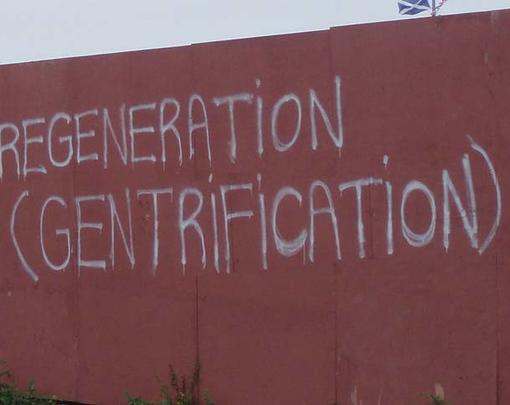To:
The Democracy Collaborative Board of Trustees, Ted Howard
Re:
Economic Impacts and Strategic Responses to the Covid-19 Crisis
From:
Joe Guinan & Thomas Hanna
March 27, 2020
Joe:
We are continually assessing the impacts and implications of what is going on and preparing TDC’s strategic responses – still a work in progress. We will be undertaking some intensive scenario-planning using different assumptions about the severity of, first, the public health crisis i.e. the direct medical impacts of the pandemic, and, second, the economic impacts in both the short and medium term. I confess to being somewhat in the dark as to the former, but we are getting a handle on the latter. I’ll hand over to Thomas to survey the immediate economic impacts to date and then I’ll look ahead a bit more speculatively.
Thomas:
Thanks, Joe. As you all are no doubt aware at this point, this country is facing an economic crisis that is unprecedented in modern history. Perhaps never before, even during the worst wars and economic crises, have Americans been physically locked down and businesses forced to close.
Yesterday, the government revealed that in just one week, 3.3 million Americans filed for unemployment insurance. This is more than four times the previous modern record, which was set in 1982. It is also more than four times the single week record of anytime during the 2008/09 financial crisis and Great Recession. Moreover, this number is merely the tip of the iceberg. It does not count furloughed workers or the potentially millions of workers who were unable to navigate the complex unemployment system, which in many states is consciously designed to dissuade workers from applying. A few days ago, the St. Louis Fed estimated that the unemployment rate could reach 32.1% in the 2nd quarter with a staggering 52.8 million Americans out of work.
Just a couple more statistics: Both Goldman Sachs and Morgan Stanley are now suggesting that we could see a GDP decline of around 30% in quarter 2, and this is on top of an unknown decline in quarter 1 as well as the potential of further decline in quarter 3 if the pandemic continues. By contrast, the total decline, from peak to trough, during the 2008/09 financial crisis was -4.3 percent.
The only thing comparable to what we are now seeing economically is the Great Depression. During that crisis, GDP fell around 30 percent and unemployment peaked at 25%.
So, are we headed for another Great Depression. Well, yes and no. Yes, we are definitely going into a deep, deep recession. But unlike 80 years ago, there are some fundamental differences. First and foremost, this recession has not, as of yet, included a financial crisis (which I will talk a bit more about in a second). And second, while it will be deep, this recession is likely to be relatively quick and end when the threat of the virus ends (the Great Depression lasted around 10 years).
So, I will end with a brief discussion of why there has not been a financial crisis so far. And the simple answer is pretty unprecedented government economic action and intervention. Unlike during the 1929 crash and the ensuing years, when free market liberalism reigned and Hoover did very little to intervene, there has been absolutely no hesitation this time around. The Federal Reserve immediately started deploying all the tools in its arsenal to stop a financial crisis from occurring, including slashing interest rates to zero, restarting its quantitative easing program, and providing trillions in liquidity support to the financial system. They have even gone further and done things that they previously said they couldn’t do, like buying up municipal bonds.
On top of this, Congress is in the final stages of a massive economic bailout program (which is somewhat erroneously being called a “stimulus”). The $2 trillion package – which will unlock another $4 trillion or so of Federal Reserve lending authority – passed the Senate unanimously on Wednesday night 96-0. Its worth reflecting on this vote for a second, because it demonstrates how dead the free market myth really is. Just 10 years ago, during the financial crisis, the much smaller bailout package was initially voted down, and then the it subsequently only passed by a 74-25 margin.
I’ll end by just saying that while we will need to wait a couple days for a full analysis of the stimulus bill, it appears to be a corporate giveaway of epic proportions. A variety of industries will be handed hundreds of billions in public money with few strings attached. While the transfer of equity in exchange for bailout cash is theoretically still on the table, it appears that this will be at the discretion of Steve Mnuchin, Larry Kudlow, and others in the Administration. I don’t have high hopes that they will follow through on some of their public musings on the topic.
In the meantime, individuals and small businesses are getting pennies. Trump actually had a very important line yesterday that many people have missed. He said “restaurants will open and thrive again…but maybe not under the current ownership.” And I think this is true for business in general. What this crisis may do, fueled by this extremely inequitable bailout package, is facilitate a massive transition and concentration of ownership into corporate and elite hands.
Anyway, that it one of the potential scenarios that, as Joe said, we will be looking at. And with that, I’ll turn it back over to Joe to do some more forward-looking thinking with regards to what this crisis may mean for our work.
(5 minutes.)
Joe:
Thanks, Thomas. A sobering picture. Now I’d like to spend a few minutes on what might come next – and then we look forward to hearing the views of the trustees.
Our operating assumption is that as well as an enormously difficult moment of pain and suffering for many, the pandemic and its aftermath also represents an enormously important moment of crisis opportunity.
The mantra of the neoliberals under Friedman and Hayek was “Never Let a Good Crisis Go To Waste.” We need to be just as clear-eyed in this pivotal moment. Historians may look back on the 2008 Great Financial Crisis and the Covid-19 pandemic as the bookends of the period of transition from a dying neoliberalism to what came next – which could either be the democratic economy we are calling for – or something much, much darker.
We are in a very unusual and unprecedented situation, as Thomas indicated. People are talking about a wartime economy. That’s not quite right. A wartime economy is about mobilization. This situation, in its first phase, is about the opposite – demobilization. A controlled shutdown of all but the most essential parts of the economy. Only later will we see the mobilization phase – a reboot and refloating of the economy, hopefully pointed in the new directions we have been pushing for years.
There are important immediate battles to be fought over how to manage that first phase – support for incomes, basic planning to get essential goods (food, medicines) to where they need to be, a moratorium on evictions and debt repayments, and the like. Controlled public takeovers of stricken industries on the right terms. We are already engaged in many of those conversations, and will continue to be so.
The big prize, however, is the medium term, what comes after. How we use this moment to shape that. Marjorie’s memo, shared with the trustees, collects some of the initial thinking on that. Some of us have also been in intensive dialogue with some of our closest partner organizations in the past days and weeks. It’s fair to say we’re collectively thinking in terms of three general scenarios regarding what could emerge afterwards. Think of them as the Good, the Bad, and the Ugly.
The Good would see a full-scale mobilization around both appropriate emergency responses and the widespread uptake afterwards of the kinds of community wealth building and democratizing economic strategies we are advocating and pursuing. A new enabling democratic state would underpin this. It would support incomes and mothball businesses in the meantime, extend public and other forms of democratic ownership. And when the time is right it would launch a Green New Deal and fundamental reordering of our economy.
The Bad would see an attempted reversion, after crisis responses, to the status quo ante, a re-run of the kinds of responses we saw to the Great Financial Crisis, a reinstallation of globalized neoliberal corporate capitalism, with all its contradictions and crises. Bail-outs of the banks and the corporate sector, with little for the rest of us. Increased inequality and precarity, the same story we are all familiar with.
Unfortunately, that’s not the worst that could happen. There’s also the Ugly. The Ugly would be a full-on “shock doctrine” disaster response, combining a new state authoritarianism with ongoing uncontrolled capitalism. It would tend in the direction of fascism or at least rabid illiberalism. A racialized police state with the suspension of basic liberties and a vicious reactive right-wing populist politics. We’ve had a taste of this. We need to acknowledge that things can get far, far worse than Trump.
At TDC, we want to do everything we can to bring about the first, the Good scenario. We are looking at the following lines of inquiry as extremely fruitful potential avenues of discussion, debate, advocacy, organizing, and action:
- A “Reverse Wizard of Oz” Moment, and the rise of new state capacity and capability. We have been told, for decades, that the state is shrunken and withered, incapable of standing up to corporate power. The crisis is tearing back the curtain to reveal not this pathetic figure of neoliberal imagination, but the new Leviathan. All things are possible. Basic income. A Green economy. Provision of universal basic services. Unlimited monetary interventions. Vastly expanded public ownership. National economic planning. We’ll be looking at whether we see or can pave the way for some very large-scale interventions, big plays – in the health system, the financial system, the energy sector:
QE for the planet, our proposed buyout of the oil and gas sector, used to cost a trillion dollars. Today we could do it for $600 billion. Tomorrow, who knows?
Similarly, a public option in pharma was once a radical proposal. Now it’s a commonplace demand, and may well happen.
Same thing with equity stakes in exchange for bail-outs. Buyouts not bailouts. Thomas floated this in his paper on The Crisis Next Time in banking. It’s now a moderate demand and rallying point for organizing. We basically came up with the “buyouts not bailouts” framework that is framing the progressive response to the crisis.
- Institutional Design for the Crisis and Aftermath. We need to get really clever and really focused really fast is we are to further shape the direction things move in. We have the capacity to do the kind of political-economic institutional design that is needed and we need to use that capacity and deploy it to great effect.
Let me give you an example, which may or may not be the way we go. Employee ownership business conversions. We’ve been relying on a strategy of the “silver tsunami” or baby boomer retirees. We now need to renovate that strategy for the new reality that is upon us.
A controlled shutdown of the economy might last for months. If it is protracted, what happens to businesses? It’s not impossible that 50, 60, 80 percent of small businesses in America could go to the wall. Maybe it’s less, but it will be very significant. In the wings is vulture capital, private equity waiting to gobble up these businesses for pennies on the dollar.
What if we were to find a way to acquire and mothball these businesses, in a public holding company like FDR’s Reconstruction Finance Corporation, hold them for the duration of the crisis, and then refloat them under democratic management when the economy reboots and the stimulus kicks in.
Perhaps that’s not the right approach, but something else is. No-one else is going to think this way. It falls to us.
- Manifesto for New Times: A New Era of Community Wealth. The third area I don’t even fully know how to articulated yet, but I know there is something there and we’ve begun to feel our way into it.
It’s the idea that the post-crisis aftermath might be our moment, not just to build a few more co-ops or advance a few more community wealth initiatives, not just to create a slightly more favorable environment for our work, but to do the whole damn thing.
To make community wealth the idea whose time has come. To rebuild our broken economy on the basis of a re-localization and democratization of economic activity. To make our ideas the new common sense in a new era of planning, public ownership, and the recognition that we need far greater resilience, local control, and community.
There’s an interesting politics of mutual aid springing up all over. People are recognizing their interconnectedness. We don’t quite know how yet, but if we can lead with our values and vision in this moment, the prize could be very big indeed.
Lastly, a word on our leadership. I know I speak for all the executives and for many at TDC when I say we feel called to lead in this moment. We are literally being told that by our allies, our partners, our funders.
I don’t want to sound smug or self-righteous, but we were really ahead of the curve on this thing, the systemic nature of the problems and solutions, and in a matter of weeks the political and economic discourse has shifted markedly in our direction. Massive government interventions, public ownership, nationalization, income guarantees, etc. We are pretty much the only real game in town on some of these things.
Our webinar yesterday on nationalization had almost 500 live participants. We are being sought out all over the place. The big green enviro groups are suddenly getting on board with nationalizing fossil fuels, and Johanna and Carla are working with them on that actively. Our public option in pharma is being taken up.
We were among the very few who saw this coming, and we have done our homework.
With your leadership and support, we look forward to stepping forward into this moment in history to make it our moment.
Thank you, and we are greatly looking forward to your guidance.



